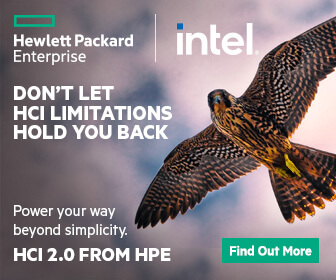The benefits of hyperconverged infrastructure (HCI) are by now well-known. HCI makes it simpler and easier to manage virtual desktops, apps and data remotely. It’s flexible and efficient, offering the ability to add more compute and storage as needed, just by adding a node. Enterprises are saving on power, space and cooling costs by moving to HCI platforms.
However, there is a downside: The efficiency of bundling compute and storage in a single device comes at the cost of flexibility. For organisations whose compute and storage needs don’t scale exactly in parallel, it can lead to needless overprovisioning and waste.
HCI 2.0 solves this problem by disaggregating IT infrastructure, and adding a layer of AI-powered self management to make IT operations even more trouble-free.
What is HCI?
HCI, or hyperconverged infrastructure, combines server hardware and locally attached storage resources with intelligent software, to create building blocks. It replaces legacy infrastructure consisting of separate servers, networks and storage arrays.
When AI and HCI intersect
Machine learning and automation are already widely welcomed as a productivity enhancer for organisations that use it to boost application performance and manage large volumes of data. AI optimises HCI storage, manages workload demands and optimises application workloads. When analytics engines intersect with HCI, the result is “a powerful solution that enables efficiency in the data centre and enhances workload productivity”.
There are wider benefits of AI-driven infrastructure. It’s particularly useful to organisations with systems spread around the world, using various cloud providers. AI can monitor multiple systems, make upgrades, and install security patches—all without the need for downtime. Growth in digital business is also driving interest in artificial intelligence, according to Gartner, “at a pace that has many IT leaders hurrying to build an AI strategy and investment plan”.
Automation is not AI
But let’s not confuse AI with automation. So-called “AI” for storage is popping up everywhere, but much of it is merely the automation of routine tasks. This is, let’s be clear, a huge benefit. HCI automation can optimise storage for peak performance, or dynamically allocate processing workloads to level out demands and maintain peak performance, with fewer system lags and crashes. Previously, this and many more procedures were the costly and mundane preoccupation of firefighting IT staff.
But true AI-driven infrastructure goes a step beyond automation. It can drive value across the organisation by predicting and preventing problems before they happen. HPE Infosight, for example, draws on stored and live telemetry data from many thousands of servers around the world to continuously analyse and predict system performance. This machine-learning knowledge base enables HPE Infosight not just to automate routine functions, but to prevent and solve problems.
What is HPE Infosight?
HPE Infosight is designed to solve the headaches of vendor support, from manual log files to break-fix cycles with multi-tiered escalations and post-mortems. It manages infrastructure performance and uptime in the data centre, using AI to predict and prevent problems before they arise across an infrastructure stack. With HPE Infosight watching over your infrastructure 24/7, you’ll achieve:
- 79% lower IT operational expenses.
- 73% fewer trouble tickets in the environment.
- 85% less time spent resolving storage-related trouble tickets.
- 69% faster time to resolution for events that necessitate level 3 support.
HCI has evolved: HPE HCI 2.0
The HCI promise of simpler, cheaper and more reliable IT is realised in HCI 2.0 from HPE, because storage and compute can be bought and scaled separately. Neither is overloaded and downtime disappears to 00.0001%. Combined with HPE Infosight’s AI management and predictive capabilities, it offers both intelligence and reliable performance, simply.
IDC confirms: “Because this solution offers the best of both HCI and converged architectures, it will likely compete with both type of competitive offerings. There is no doubt that the platform will broaden the types of larger, more mission-critical workloads that HCI platforms can effectively support”.
Learn more here.






